
Devoted
entirely to Amateur radio

Build your own LF/Audio instruments
m1.
LC and Q-meters
m2. RF
detectors, level meters, attenuators, dummy loads, signal
dividers
m3. RF
signal- and power generators
m11 Grid
dip meters
m12
Power- and VSWR-meters
m21
Norwegian instruments
m22.
Old measuring instruments
m23.
Signal-to-noise-meter
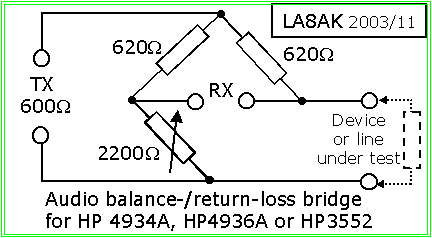
1a) Audio/LF impedance
measuring instrument. May also be used
to find a figure for balance for a telephone
line,
as so-called Balance-tester, and it may be set
for an impedance and measure a figure of reflection loss
on a line, but
the instrument should have level reading calibrated in dB/dBm.
1b)
Balance-tester. Have used it at work to search for
improper connections in analogue telephone exchanges, some wires
were grounded and caused bad crosstalk between subscriber lines,
used 10kHz to avoid interference for the subscribers.
This simple application for 600 ohm balanced lines depends on the
input/output transformers in the measuring equipment,
for the mentioned HP instruments it is no problem, and it may
also work for Wandel&Goltermann SPM-3/PS-3 combination,
but the latter already have a bridge circuit implemented to
measure mean impedances (real, but not imaginary values).
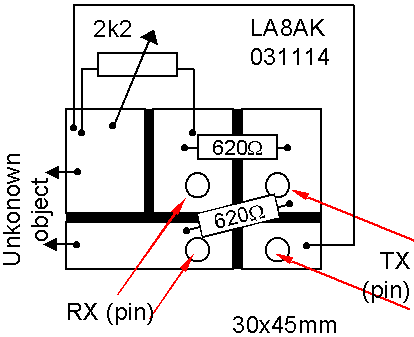
1c) Audio bridge construction
using 30x45mm piece of single-sided PCB laminate, to be plugged
on to the instrument. The pcb
copper sectors are made using hacksaw.
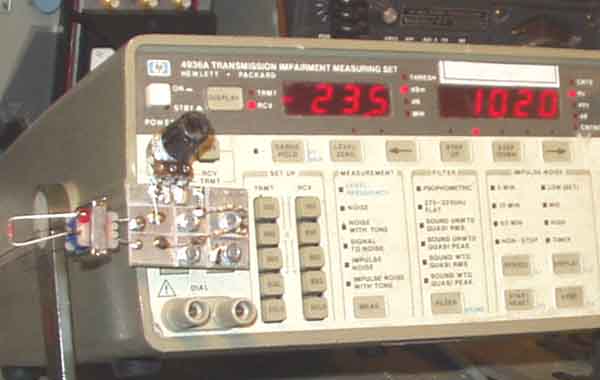
1d)
Test set-up for measuring an audio transformer's impedance. I
must admit that the HP4934 or HP4936 digital audio
meters aren't the most practical to adjust for minimum
deflection, used similar board earlier with a Siemens analogue
instrument (0.3-2.2MHz), but it is easy when you can mount the
board on to a dual function RX+TX instrument.
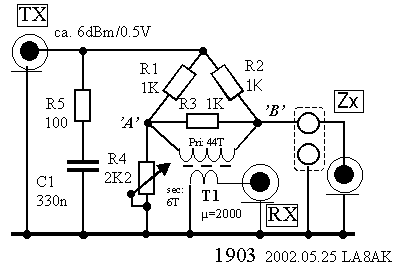 |
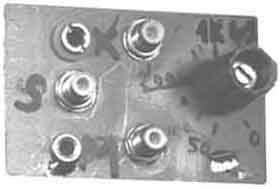 |
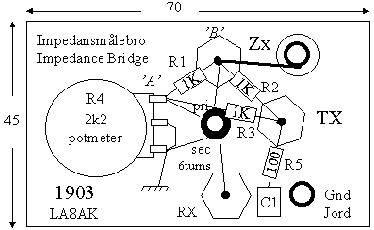 |
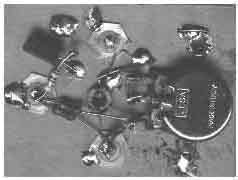 |
2) LF/MF impedance
measuring bridge. The
advantage with this bridge is that it is not important to
calibrate the potmeter reading, you just use a VOM when
everything is disconnected from
the coax connectors. Have used it to measure mixer termination
impedance using sufficient
low RF drive.
This is the same bridge as mentioned above, but has an extra
transformer to balance the signal
for receiver connection. All connections are done with coax
connectors, in this case the high quality
gold plated conhex type (75 ohm) which is available free in
larger quantities from radio link equipment,
but BNC or phono types could be used if you prefer another
standard type.
C.98 Diverse komponenter for amatørradioformål (components for amateur radio purposes)